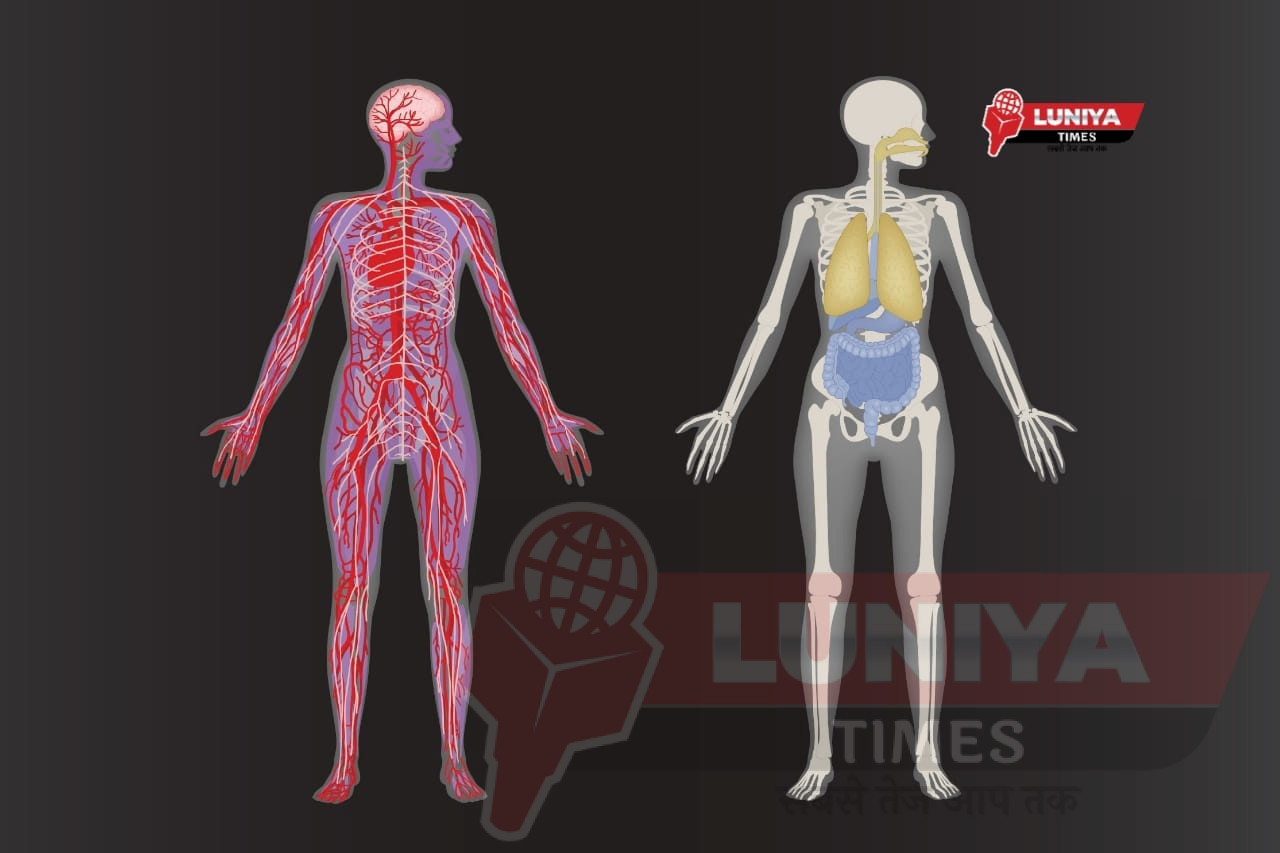
The 10 best topics on human body is a complex biological system composed of various organs, tissues, and cells working together to maintain life. It consists of several major systems, including the skeletal system, muscular system, circulatory system, respiratory system, digestive system, nervous system, endocrine system, immune system, and reproductive system. Each system has its own unique functions, but they all interact and depend on each other for the body to function properly. The 10 best topics on human body is incredibly resilient and adaptable, capable of performing a wide range of tasks and surviving in diverse environments.
Anatomy of the Human Body
Exploring the Anatomy of the Human Body
Introduction
The human body is a marvel of nature, a complex biological machine composed of various systems, organs, tissues, and cells working harmoniously to sustain life. Understanding its anatomy is akin to unraveling the mysteries of existence itself. From the microscopic intricacies of cells to the grandeur of the skeletal system, each component plays a vital role in ensuring our survival and functionality. In this exploration, we delve into the anatomy of the human body, shedding light on its remarkable structure and functions.
The Skeletal System
At the core of the human body lies the skeletal system, a framework of bones providing structure, support, and protection. Comprising over 200 bones, this system not only gives shape to the body but also serves as a repository for essential minerals like calcium and phosphorus. Beyond its structural role, bones are dynamic tissues constantly undergoing remodeling, a process vital for bone health and strength.
The Muscular System
Working in tandem with the skeletal system is the muscular system, a network of muscles responsible for movement, stability, and heat generation. From the powerful quadriceps in the thighs to the delicate muscles of the face, there are over 600 muscles in the human body, each serving a specific function. Through the complex interplay of muscles, coordinated movements, from a simple smile to an athletic sprint, become possible.
The Circulatory System
Fueling the body with oxygen and nutrients while removing waste products is the task of the circulatory system. At its center is the heart, a muscular organ tirelessly pumping blood through a network of blood vessels known as arteries, veins, and capillaries. This intricate transportation system ensures the delivery of vital substances to every cell in the body, maintaining homeostasis and sustaining life.
The Respiratory System
Breathing is an involuntary act, yet it is essential for our survival. The respiratory system facilitates the exchange of oxygen and carbon dioxide, allowing for cellular respiration to occur. From the nasal passages to the alveoli in the lungs, each component of this system plays a crucial role in the process of gas exchange, ensuring the body receives the oxygen it needs while expelling metabolic waste.
The Nervous System
As the command center of the body, the nervous system coordinates and regulates bodily functions, from simple reflexes to complex cognitive processes. Comprised of the central nervous system (brain and spinal cord) and the peripheral nervous system (nerves), this intricate network of neurons enables communication between different parts of the body, allowing for sensory perception, motor control, and higher cognitive functions.
The Digestive System
Transforming food into energy and essential nutrients is the primary function of the digestive system. From ingestion to excretion, this process involves various organs, including the mouth, esophagus, stomach, small intestine, large intestine, liver, gallbladder, and pancreas. Through mechanical and chemical digestion, nutrients are extracted from food and absorbed into the bloodstream, while waste products are eliminated from the body.
The Endocrine System
Regulating metabolism, growth, development, and reproduction is the role of the endocrine system, a network of glands that secrete hormones into the bloodstream. From the thyroid gland to the adrenal glands, each gland produces specific hormones that act as chemical messengers, influencing the function of target organs and maintaining hormonal balance throughout the body.
Conclusion
The anatomy of the human body is a testament to the intricacy and brilliance of nature’s design. From the microscopic workings of cells to the synchronized movements of muscles, every aspect of our anatomy serves a purpose in maintaining life and facilitating our existence. By unraveling the mysteries of our anatomy, we gain a deeper appreciation for the wonders within and a greater understanding of ourselves as beings intricately connected to the world around us.
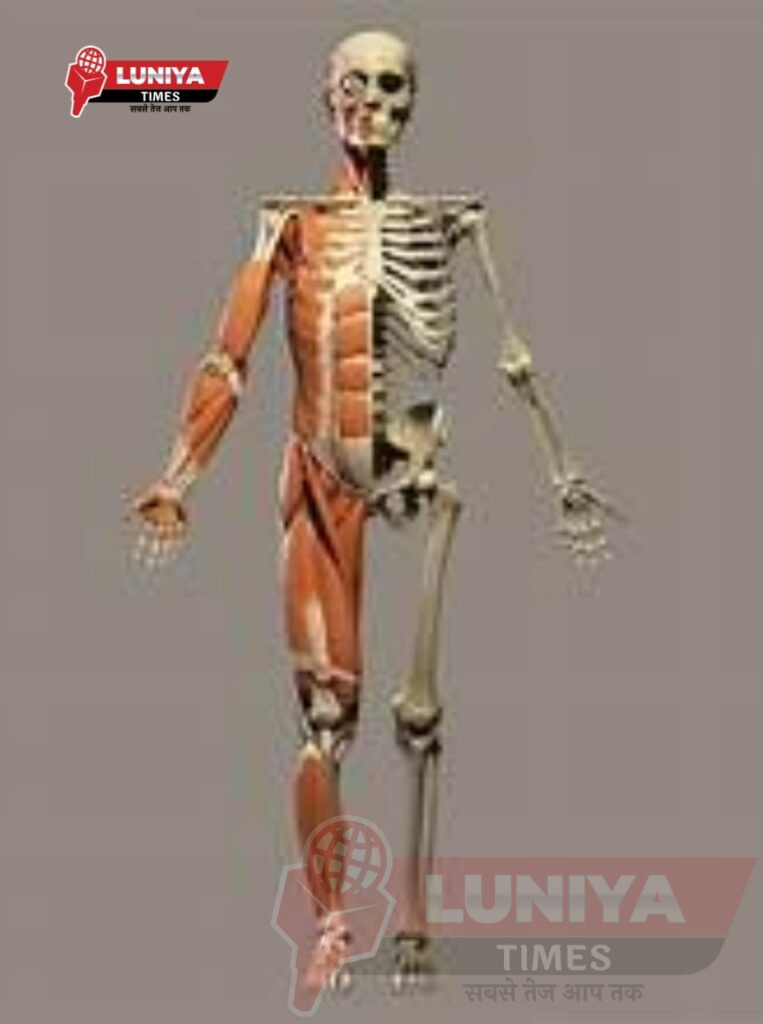
Skeletal System
The Skeletal System: The Framework of Life
The skeletal system stands as the architectural marvel of the human body, providing structure, support, and protection to the delicate organs within. Comprising bones, joints, and connective tissues, this intricate framework not only serves as the scaffold upon which our bodies are built but also plays crucial roles in movement, blood cell production, and mineral storage. Let’s delve into the fascinating world of the skeletal system, exploring its anatomy, functions, and significance in maintaining overall health.
Anatomy of the Skeletal System
The human skeletal system consists of over 200 bones, each uniquely shaped and sized to fulfill specific functions. These bones are classified into two main categories: the axial skeleton and the appendicular skeleton.
The axial skeleton forms the central axis of the body and includes the skull, vertebral column, and rib cage. The skull protects the brain and sensory organs, while the vertebral column provides support and flexibility, allowing us to stand upright and perform various movements. Meanwhile, the rib cage encases vital organs such as the heart and lungs, safeguarding them from external harm.
The appendicular skeleton, on the other hand, comprises the bones of the limbs and their associated girdles. This includes the bones of the arms (humerus, radius, ulna) and legs (femur, tibia, fibula), as well as the pectoral girdle (scapula, clavicle) and pelvic girdle (pelvis). These bones facilitate mobility and serve as attachment points for muscles, enabling us to perform a wide range of activities, from walking and running to grasping and lifting.
Functions of the Skeletal System
1. Support The skeletal system provides structural support for the body, maintaining its shape and preventing it from collapsing under the force of gravity.
2. Protection Bones act as a protective shield for vital organs. For example, the skull guards the brain, the rib cage shields the heart and lungs, and the vertebral column protects the spinal cord.
3. Movement Muscles attach to bones via tendons, allowing for movement at joints. When muscles contract, they pull on the bones, causing movement of body parts.
4. Blood Cell Production Within the marrow of certain bones, such as the pelvis, sternum, and vertebrae, red and white blood cells are produced through a process called hematopoiesis.
5. Mineral Storage Bones store essential minerals, particularly calcium and phosphorus, which are released into the bloodstream as needed to maintain mineral balance in the body.
Maintaining Skeletal Health
To ensure optimal skeletal health throughout life, it is essential to adopt healthy lifestyle habits and engage in activities that promote bone strength and density. This includes:
1. Balanced Diet Consuming foods rich in calcium, vitamin D, and other nutrients crucial for bone health. Dairy products, leafy greens, nuts, and fortified cereals are excellent sources of these nutrients.
2. Regular Exercise Weight-bearing exercises such as walking, jogging, dancing, and strength training help to stimulate bone growth and maintain bone density.
3. Avoiding Harmful Habits Limiting alcohol consumption, avoiding smoking, and minimizing intake of sugary beverages can help prevent bone loss and reduce the risk of osteoporosis and other skeletal disorders.
4. Safety Precautions Practicing caution to prevent falls and accidents, especially in older adults, can reduce the risk of fractures and other injuries.
5. Regular Check-ups Seeking regular medical check-ups and bone density screenings can help detect and address any issues related to skeletal health at an early stage.
Conclusion
the skeletal system serves as the foundation upon which the human body is built, providing structure, support, and protection while enabling movement and vital physiological functions. By understanding its anatomy, functions, and the importance of maintaining skeletal health, we can take proactive steps to ensure a strong and resilient framework for a healthy and active life.
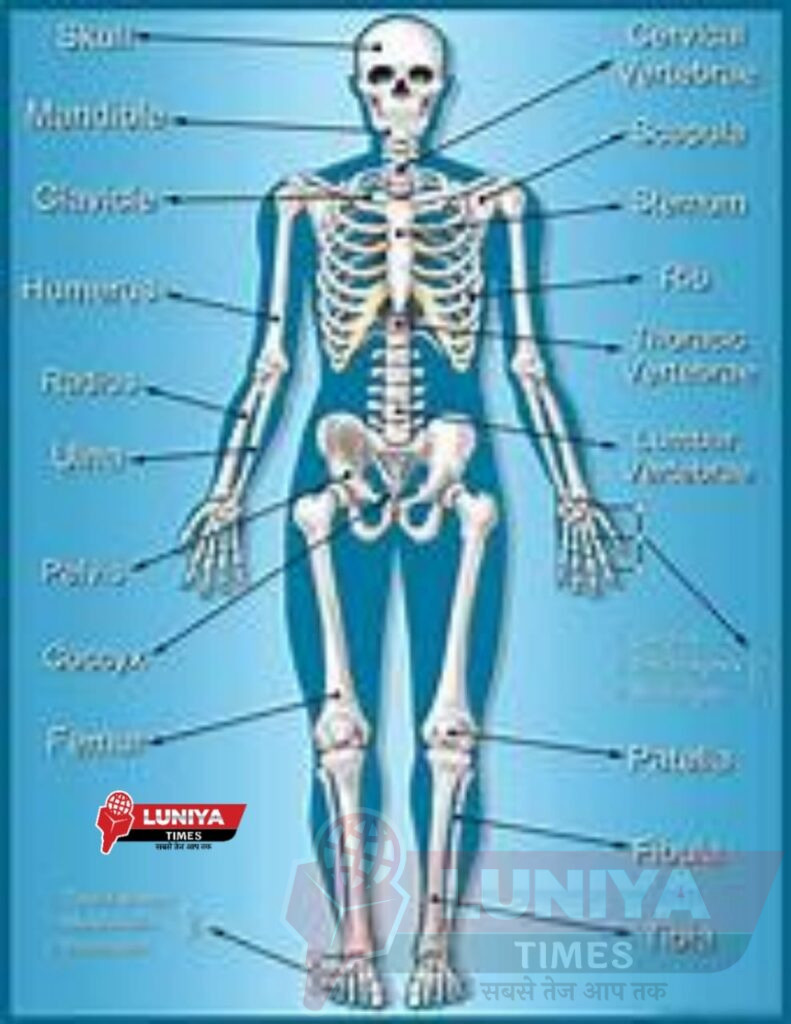
Muscular System
Understanding the Marvels of the Muscular System
Introduction
The human body is a complex and fascinating machine, composed of numerous interconnected systems that work harmoniously to sustain life. Among these systems, the muscular system stands out as a marvel of biological engineering, enabling movement, stability, and control. From the graceful movements of a dancer to the powerful strides of an athlete, the muscles play a pivotal role in shaping our physical capabilities and defining our abilities. In this article, we delve into the intricacies of the muscular system, exploring its structure, function, and significance in human physiology.
Anatomy of the Muscular System
At its core, the muscular system comprises three main types of muscle tissue: skeletal, cardiac, and smooth muscles. Skeletal muscles, attached to bones by tendons, are responsible for voluntary movements such as walking, running, and grasping objects. They are striated in appearance due to the arrangement of protein filaments within their fibers, which enables coordinated contraction and relaxation.
Cardiac muscle, found exclusively in the heart, is responsible for pumping blood throughout the body. It possesses unique properties that allow for rhythmic contractions without conscious effort, ensuring the continuous circulation of blood to vital organs and tissues.
Smooth muscle, located in the walls of internal organs such as the digestive tract, blood vessels, and respiratory airways, facilitates involuntary movements such as peristalsis and vasoconstriction. Unlike skeletal and cardiac muscles, smooth muscles lack striations and are under the control of the autonomic nervous system.
Function of the Muscular System
The primary function of the muscular system is movement. Skeletal muscles work in tandem with bones and joints to produce a wide range of motions, from simple gestures to complex athletic maneuvers. This ability to generate force and motion is essential for performing everyday tasks, engaging in physical activities, and expressing emotions through gestures and facial expressions.
Furthermore, muscles contribute to posture and stability by providing support to the skeletal framework. They help maintain proper alignment of the body’s segments, preventing slouching or collapsing under the force of gravity. Strong and well-conditioned muscles not only enhance physical performance but also reduce the risk of injuries and musculoskeletal disorders.
In addition to movement and stability, the muscular system plays a crucial role in thermoregulation. Muscle contractions generate heat, which is especially vital during periods of physical exertion or exposure to cold environments. Through processes such as shivering and non-shivering thermogenesis, the body regulates its internal temperature to maintain homeostasis and ensure optimal functioning of metabolic processes.
Importance of Exercise and Maintenance
Regular exercise is essential for maintaining the health and functionality of the muscular system. Engaging in activities that challenge the muscles, such as strength training, cardiovascular exercise, and flexibility exercises, promotes muscle growth, endurance, and flexibility. Additionally, exercise stimulates blood flow to the muscles, delivering oxygen and nutrients while removing metabolic waste products, thus supporting tissue repair and recovery.
Proper nutrition also plays a critical role in supporting muscle health. Adequate intake of protein, vitamins, minerals, and hydration is necessary to fuel muscle growth and repair, optimize energy levels, and prevent cramping or fatigue. Incorporating a balanced diet rich in lean proteins, whole grains, fruits, and vegetables supports overall muscle function and performance.
Furthermore, rest and recovery are essential components of a healthy muscular system. Adequate sleep, relaxation techniques, and periodic breaks from intense physical activity allow muscles to repair, rebuild, and adapt to stressors, preventing overuse injuries and promoting long-term resilience.
Conclusion
The muscular system is a remarkable network of tissues and organs that enable movement, stability, and control in the human body. From the voluntary actions of skeletal muscles to the involuntary contractions of cardiac and smooth muscles, every aspect of our physical existence is intricately intertwined with the function of muscles. By understanding the anatomy, function, and importance of the muscular system, we can adopt strategies to maintain its health and vitality, enhancing our overall well-being and quality of life.

Nervous System
Understanding the Intricacies of the Nervous System: A Comprehensive Overview
Introduction:
The nervous system is one of the most complex and fascinating systems in the human body, responsible for coordinating and regulating all bodily functions. Comprising the brain, spinal cord, and an intricate network of nerves, it plays a crucial role in everything from basic reflexes to higher cognitive functions. In this article, we delve into the structure, function, and significance of the nervous system, exploring its intricate mechanisms and how they contribute to our everyday experiences.
Anatomy of the Nervous System:
The nervous system can be divided into two main components: the central nervous system (CNS) and the peripheral nervous system (PNS). The CNS consists of the brain and spinal cord, while the PNS encompasses all the nerves that branch out from the CNS to the rest of the body.
1. Central Nervous System (CNS):
- Brain: The brain is the control center of the nervous system, responsible for processing sensory information, initiating actions, and coordinating bodily functions. It is divided into several regions, each with its own specialized functions, such as the cerebral cortex, which is involved in higher cognitive processes, and the cerebellum, which regulates balance and coordination.
- Spinal Cord: The spinal cord serves as a relay between the brain and the peripheral nerves, transmitting signals to and from the brain and coordinating reflex actions.
2. Peripheral Nervous System (PNS):
- Somatic Nervous System: This division of the PNS is responsible for voluntary movements and sensory perception. It includes motor neurons that control skeletal muscles and sensory neurons that transmit information from the body’s sensory organs to the CNS.
- Autonomic Nervous System: The autonomic nervous system regulates involuntary bodily functions, such as heart rate, digestion, and breathing. It consists of two main branches: the sympathetic nervous system, which mobilizes the body’s resources in response to stress or danger, and the parasympathetic nervous system, which promotes relaxation and conserves energy.
Functions of the Nervous System
The nervous system performs a multitude of functions essential for survival and everyday functioning
1. Sensory Input: The nervous system receives sensory input from the environment through specialized receptors, such as those for sight, hearing, touch, taste, and smell.
2. Integration: The CNS processes and integrates sensory information, allowing for perception, cognition, and decision-making.
3. Motor Output: Based on integrated sensory input, the nervous system generates motor output, initiating appropriate responses through muscle contraction or glandular secretion.
4. Homeostasis: The nervous system helps maintain internal balance and stability (homeostasis) by regulating physiological processes such as body temperature, blood pressure, and fluid balance.
5. Higher Cognitive Functions: The nervous system enables complex cognitive processes such as learning, memory, language, and emotions, which are critical for human behavior and social interactions.
Disorders and Diseases of the Nervous System
A wide range of disorders and diseases can affect the nervous system, resulting in symptoms ranging from mild discomfort to severe impairment. Some common neurological disorders include:
1. Neurodegenerative Diseases: These diseases, such as Alzheimer’s disease, Parkinson’s disease, and amyotrophic lateral sclerosis (ALS), involve the progressive degeneration of nerve cells, leading to cognitive decline, movement disorders, and loss of motor function.
2. Stroke: A stroke occurs when blood flow to the brain is disrupted, leading to brain damage and neurological deficits such as paralysis, speech impairment, and cognitive impairment.
3. Epilepsy: Epilepsy is a neurological disorder characterized by recurrent seizures, which result from abnormal electrical activity in the brain.
4. Multiple Sclerosis (MS): MS is an autoimmune disease that affects the central nervous system, leading to inflammation, demyelination, and impairment of nerve function.
5. Peripheral Neuropathy: Peripheral neuropathy refers to damage to the peripheral nerves, causing symptoms such as pain, numbness, tingling, and weakness in the extremities.
Conclusion:
The nervous system is a marvel of biological engineering, orchestrating the complex interactions that enable human life. From basic reflexes to higher cognitive functions, its intricate mechanisms govern our every thought, feeling, and action. By understanding the anatomy, functions, and disorders of the nervous system, we gain insight into the mysteries of the mind and body, paving the way for advances in neuroscience and improved treatments for neurological conditions.
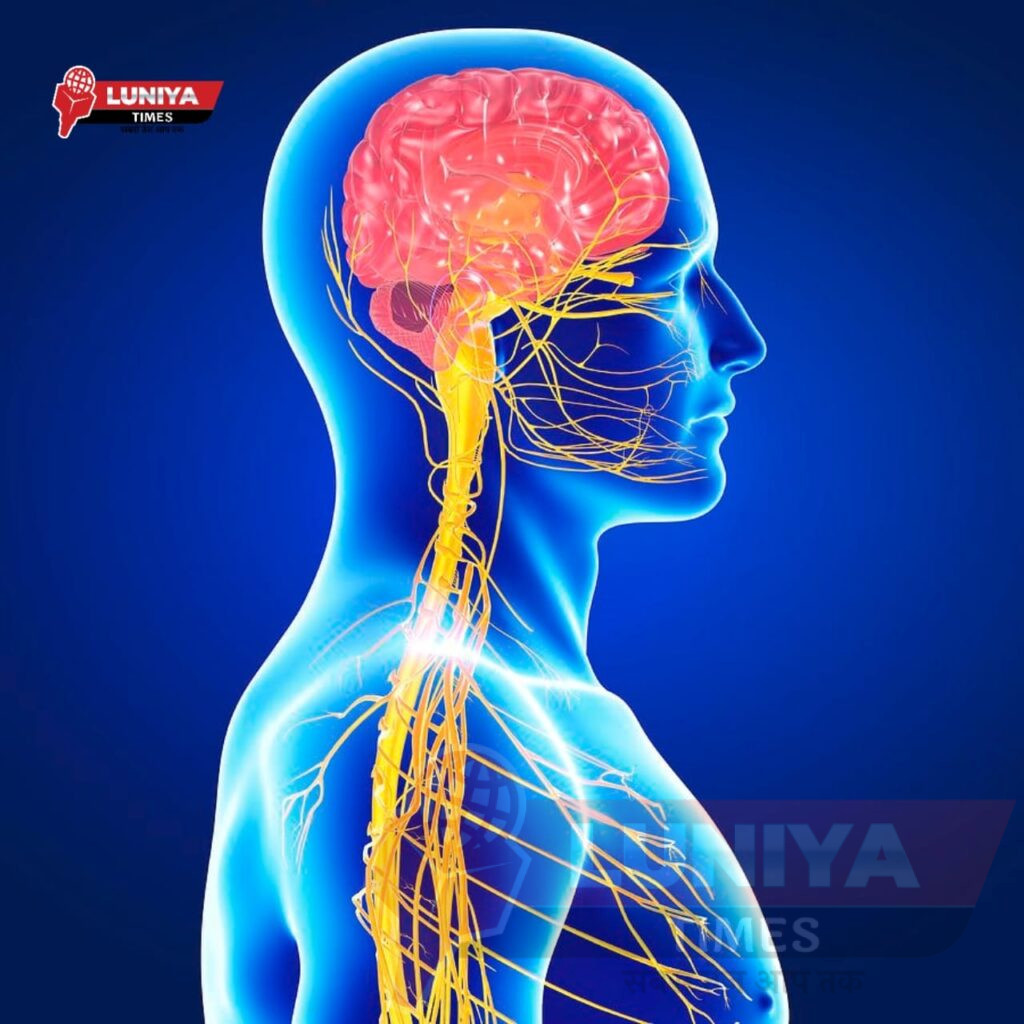
Digestive System
Navigating the Wonders of the Digestive System: A Journey Through Our Inner World
Introduction:
The digestive system is a marvel of biological engineering, orchestrating the breakdown and absorption of nutrients essential for our survival. From the moment food enters our mouths to the expulsion of waste, this intricate system works tirelessly to fuel our bodies and maintain optimal health. Let’s embark on a journey through the digestive tract, exploring its various components and the fascinating processes that occur within.
The Mouth: Gateway to Digestion
Our journey begins in the mouth, where digestion officially commences. As we chew, food mixes with saliva, which contains enzymes like amylase that kickstart the breakdown of carbohydrates. The tongue aids in the mechanical breakdown of food, forming it into a bolus for easier swallowing. Interestingly, the sense of taste plays a crucial role here, guiding us to select foods and ensuring we receive a diverse array of nutrients.
The Esophagus: A Smooth Passage
Once swallowed, the food travels down the esophagus—a muscular tube that transports it to the stomach. Through a series of coordinated muscle contractions called peristalsis, the esophagus propels the bolus downward, even if we’re standing on our heads! This remarkable process ensures that food reaches its destination despite gravity’s pull.
The Stomach: A Gastronomic Wonderland
Upon entering the stomach, the real magic of digestion unfolds. This muscular organ churns and mixes food with gastric juices, including hydrochloric acid and enzymes like pepsin, to break down proteins. The stomach’s acidic environment not only aids in digestion but also acts as a barrier against harmful pathogens, helping to protect our bodies from infection. Remarkably, despite its aggressive environment, the stomach’s lining remains unharmed thanks to a thick layer of mucus.
The Small Intestine: Absorption Central
As partially digested food leaves the stomach, it enters the small intestine—the nutrient absorption powerhouse of the body. Here, a variety of digestive enzymes from the pancreas and bile from the liver further break down nutrients into smaller molecules for absorption. The small intestine’s vast surface area, lined with finger-like projections called villi and microvilli, maximizes nutrient absorption into the bloodstream, ensuring that essential vitamins, minerals, and macronutrients are delivered to cells throughout the body.
The Large Intestine: Waste Management Facility
After the small intestine has extracted all the nutrients it can, what remains enters the large intestine, or colon. Here, water is reabsorbed, and the remaining material is compacted into feces. The colon also houses a diverse community of beneficial bacteria known as the gut microbiota, which play crucial roles in digestion, nutrient synthesis, and immune function. These microbial inhabitants ferment indigestible carbohydrates, producing gases and short-chain fatty acids that contribute to overall health.
Conclusion:
The digestive system is a complex and wondrous network of organs and processes that sustain life. From the initial intake of food to the excretion of waste, each step is finely orchestrated to ensure the efficient extraction of nutrients and the elimination of waste. Understanding and appreciating the intricacies of our digestive system can empower us to make informed choices about diet and lifestyle, ultimately promoting health and well-being. So, let’s raise a toast to our remarkable digestive system—a true marvel of nature. Cheers to good digestion and good health!
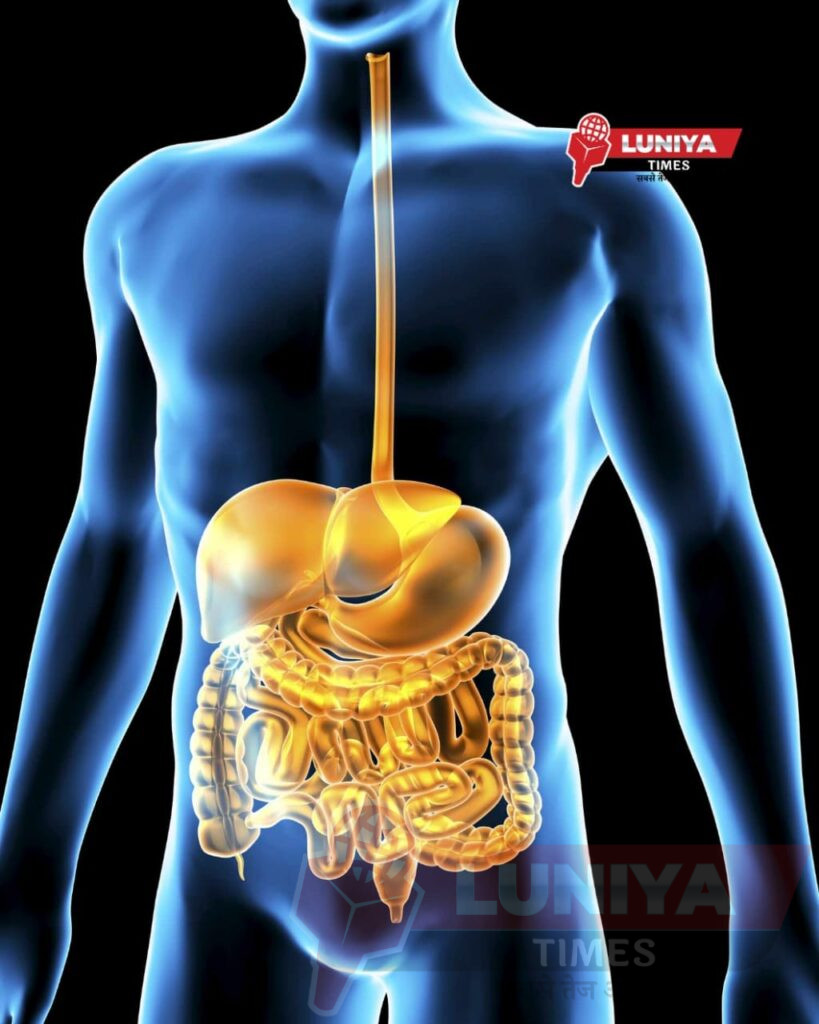
Respiratory System
Unveiling the Marvels of the Respiratory System: A Journey into the Essence of Breathing
Introduction:
The human respiratory system, an intricate network of organs and tissues, serves as the lifeline that sustains our existence. From the rhythmic rise and fall of our chests to the silent exchange of gases within our lungs, every breath is a testament to the remarkable complexity and efficiency of this vital system. In this exploration, we delve into the anatomy, physiology, and significance of the respiratory system, unraveling the mysteries behind its functioning and its profound impact on human health.
Anatomy of the Respiratory System:
At the helm of the respiratory system are the lungs, two spongy organs nestled within the chest cavity. Enclosed by the rib cage, the lungs house an intricate network of branching airways known as the bronchial tree. This branching system extends from the trachea, or windpipe, which connects directly to the throat. As air travels through the trachea, it branches off into smaller tubes called bronchi, eventually leading to even finer branches known as bronchioles. At the terminus of these bronchioles lie the alveoli, tiny sacs responsible for the exchange of oxygen and carbon dioxide.
Physiology of Respiration:
The process of respiration involves two key stages: inhalation and exhalation. During inhalation, the diaphragm—a dome-shaped muscle located beneath the lungs—contracts and flattens, while the intercostal muscles between the ribs expand the chest cavity. This expansion lowers the pressure within the lungs, causing air to rush in through the airways. As oxygen enters the alveoli, it diffuses across the thin membrane into the bloodstream, where it binds to hemoglobin for distribution to tissues throughout the body.
Conversely, during exhalation, the diaphragm and intercostal muscles relax, allowing the chest cavity to decrease in size. This increase in pressure within the lungs forces carbon dioxide-rich air to be expelled from the body. The entire process is orchestrated by the autonomic nervous system, which regulates breathing rate and depth in response to changing oxygen and carbon dioxide levels in the blood.
Significance of the Respiratory System:
Beyond its primary function of gas exchange, the respiratory system plays a multifaceted role in maintaining homeostasis within the body. It serves as a frontline defense against airborne pathogens and irritants, with specialized cells and mucous membranes lining the airways to trap and expel foreign particles. Moreover, the respiratory system influences various physiological processes, including pH regulation, blood pressure control, and vocalization.
Diseases and Disorders:
Despite its resilience, the respiratory system is susceptible to a myriad of diseases and disorders, ranging from mild infections to life-threatening conditions. Respiratory infections such as pneumonia, bronchitis, and influenza can impair lung function and compromise overall health. Chronic respiratory conditions like asthma, chronic obstructive pulmonary disease (COPD), and cystic fibrosis pose significant challenges, often necessitating long-term management and treatment.
Conclusion:
In essence, the respiratory system epitomizes the marvels of human anatomy and physiology, showcasing the intricate interplay between structure and function. As we continue to unravel its complexities, we gain a deeper appreciation for the indispensable role it plays in sustaining life. By nurturing and safeguarding our respiratory health, we embark on a journey towards vitality and well-being, breathing in the essence of life with each inhalation.
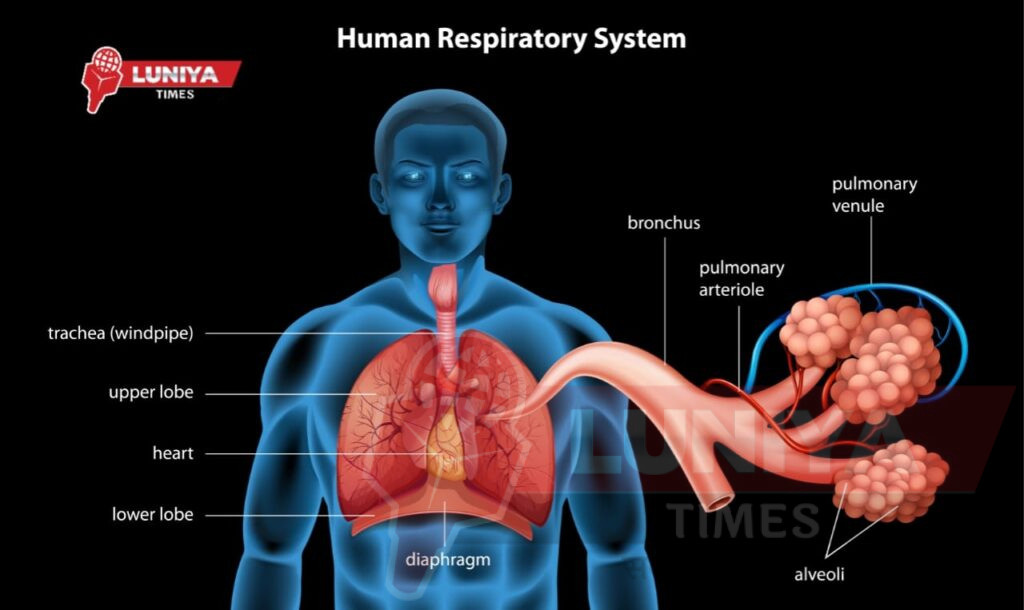
Circulatory System
Exploring the Marvels of the Circulatory System: A Lifeline Within Us
Introduction:
The circulatory system stands as a masterpiece of biological engineering, tirelessly pumping blood throughout our bodies, ensuring the delivery of oxygen and nutrients while removing waste products. It’s a complex network of organs, vessels, and cells that work harmoniously to sustain life. From the rhythmic beating of the heart to the intricate pathways of arteries, veins, and capillaries, the circulatory system is a marvel deserving of our admiration and understanding.
Anatomy of the Circulatory System:
At the heart of this system lies, quite literally, the heart. This muscular organ, about the size of a fist, functions as a powerful pump that propels blood throughout the body. The heart consists of four chambers: two atria and two ventricles, each playing a crucial role in maintaining the flow of blood.
Arteries branch out from the heart, carrying oxygen-rich blood away from it to various parts of the body. As arteries extend into smaller vessels called arterioles, they eventually lead to tiny capillaries. Capillaries are where the real magic of the circulatory system happens. These microscopic vessels enable the exchange of gases, nutrients, and waste products between the blood and surrounding tissues.
Once the blood has delivered its payload of oxygen and nutrients and picked up waste products, it returns to the heart through a network of veins. Veins carry blood back to the heart, completing the circulatory loop. Along the way, they also act as reservoirs, storing blood to accommodate changes in demand.
Function of the Circulatory System:
The primary function of the circulatory system is to transport vital substances throughout the body. Oxygen, obtained from the air we breathe, is carried by red blood cells and distributed to every cell, tissue, and organ. Without this oxygen delivery, cells would quickly suffocate, leading to tissue damage and eventual organ failure.
Nutrients, such as glucose and amino acids, are also transported by the circulatory system, providing the building blocks and energy needed for cellular functions and growth. Waste products, including carbon dioxide and urea, are removed from tissues and transported to organs like the lungs and kidneys for excretion.
Additionally, the circulatory system plays a vital role in maintaining homeostasis—the body’s ability to regulate internal conditions such as temperature, pH, and fluid balance. Through mechanisms like vasodilation and vasoconstriction, the circulatory system helps regulate blood flow and distribute heat throughout the body, ensuring optimal function even in varying environmental conditions.
Disorders of the Circulatory System:
Despite its remarkable efficiency, the circulatory system is susceptible to various disorders and diseases. Cardiovascular diseases, including coronary artery disease, hypertension, and stroke, are among the leading causes of death worldwide. These conditions often result from a combination of genetic predisposition, lifestyle factors such as diet and exercise, and environmental influences like pollution and stress.
Other circulatory disorders include aneurysms, blood clots, and varicose veins, each with its own set of symptoms and treatment options. Timely diagnosis and intervention are crucial in managing these conditions and preventing complications that can significantly impact quality of life.
Conclusion:
The circulatory system is a testament to the intricacy and resilience of the human body. Its ceaseless activity sustains life, ensuring the delivery of essential nutrients while removing waste products and maintaining internal balance. By understanding the anatomy, function, and potential disorders of the circulatory system, we gain a deeper appreciation for the remarkable machinery that keeps us alive. As we continue to unravel its mysteries, we unlock new avenues for preventing disease and improving health outcomes, ultimately enhancing the quality and longevity of human life.
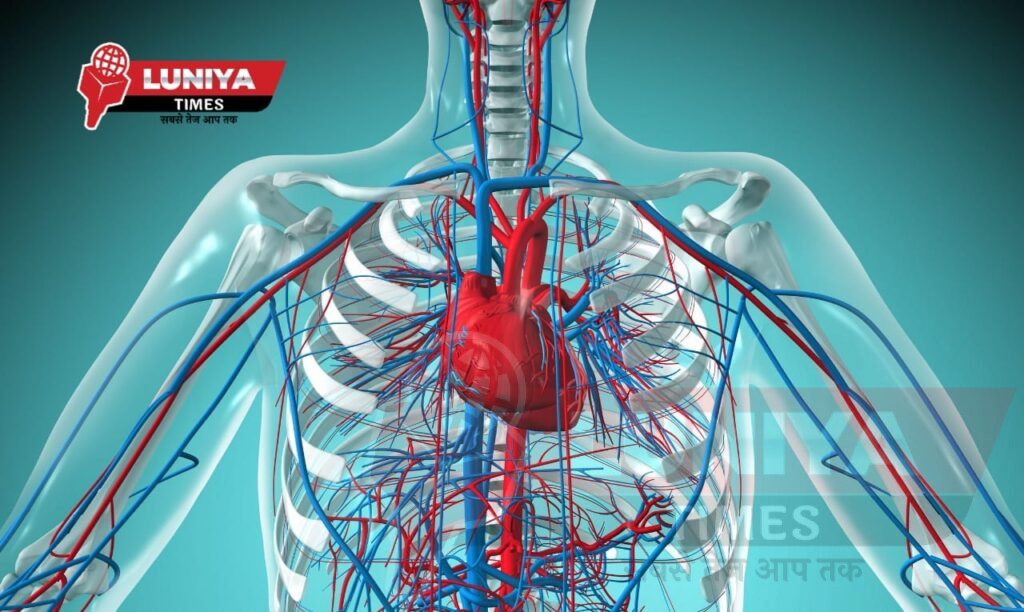
Endocrine System
Unlocking the Mysteries of the Endocrine System: A Journey through the Body’s Master Regulator
The human body is a marvel of complexity, with myriad systems working in harmony to sustain life. Among these intricate networks, the endocrine system stands out as a silent orchestrator, regulating countless physiological processes essential for health and vitality. From growth and metabolism to reproduction and stress response, the endocrine system plays a pivotal role in maintaining balance and equilibrium within the body.
Understanding the Endocrine System:
At its core, the endocrine system comprises glands that produce and secrete hormones—chemical messengers that travel through the bloodstream to target cells or organs. Unlike the nervous system, which sends rapid electrical signals, the endocrine system operates more gradually, exerting its influence over minutes, hours, or even days.
The key players in this system include:
1. Hypothalamus: Nestled deep within the brain, the hypothalamus acts as the control center for the endocrine system. It produces hormones that stimulate or inhibit the release of hormones from the pituitary gland, effectively regulating many bodily functions, including temperature, hunger, thirst, and sleep.
2. Pituitary Gland: Often hailed as the “master gland,” the pituitary gland is located at the base of the brain and governs the activity of several other endocrine glands. It secretes a variety of hormones that influence growth, reproduction, and metabolism.
3. Thyroid Gland: Situated in the neck, the thyroid gland produces hormones that regulate metabolism, energy production, and body temperature. Thyroid hormones play a crucial role in maintaining overall metabolic balance and ensuring the proper functioning of organs and tissues.
4. Adrenal Glands: Positioned atop the kidneys, the adrenal glands produce hormones such as cortisol, which help the body respond to stress, regulate blood pressure, and maintain fluid balance. They also secrete adrenaline, which triggers the body’s “fight or flight” response during times of danger or excitement.
5. Pancreas: Known primarily for its role in blood sugar regulation, the pancreas secretes insulin and glucagon, hormones that work together to control glucose levels in the bloodstream. Dysfunction of the pancreas can lead to conditions like diabetes, where blood sugar levels become imbalanced.
6. Reproductive Organs: In males, the testes produce testosterone, the primary male sex hormone responsible for the development of secondary sexual characteristics and sperm production. In females, the ovaries produce estrogen and progesterone, which regulate menstrual cycles, fertility, and pregnancy.
Hormonal Regulation:
The endocrine system operates through a delicate feedback mechanism, where hormone levels are tightly regulated to maintain homeostasis. When the body detects a deviation from the optimal state, such as low blood sugar or high stress levels, it triggers the release of specific hormones to counteract the imbalance.
For example, if blood sugar levels rise after a meal, the pancreas releases insulin to facilitate the uptake of glucose by cells, thereby lowering blood sugar levels. Conversely, if blood sugar levels drop too low, the pancreas secretes glucagon, prompting the liver to release stored glucose into the bloodstream to raise sugar levels back to normal.
Similarly, during times of stress, the adrenal glands release cortisol, which mobilizes energy reserves and increases heart rate and blood pressure to prepare the body for action. Once the perceived threat has passed, cortisol levels decline, allowing the body to return to a state of relaxation.
Disorders of the Endocrine System:
When the delicate balance of the endocrine system is disrupted, it can lead to a wide range of disorders and diseases. Some common endocrine disorders include:
1. Diabetes: Characterized by high blood sugar levels, diabetes results from either insufficient insulin production (Type 1 diabetes) or ineffective use of insulin by the body (Type 2 diabetes). Left untreated, diabetes can lead to serious complications such as cardiovascular disease, kidney failure, and nerve damage.
2. Thyroid Disorders: Conditions such as hypothyroidism (underactive thyroid) and hyperthyroidism (overactive thyroid) can disrupt metabolism, energy levels, and mood. These disorders may cause symptoms such as fatigue, weight changes, and changes in heart rate.
3. Adrenal Disorders: Disorders of the adrenal glands, such as Addison’s disease and Cushing’s syndrome, can affect hormone production and result in symptoms such as fatigue, weakness, and changes in blood pressure.
4. Reproductive Disorders: Hormonal imbalances in the reproductive system can lead to conditions such as infertility, polycystic ovary syndrome (PCOS), and erectile dysfunction.
Conclusion:
The endocrine system may operate silently behind the scenes, but its influence on human health and well-being is profound. From regulating metabolism and growth to orchestrating the body’s response to stress and reproduction, hormones play a central role in virtually every aspect of our lives. By understanding the complexities of the endocrine system and recognizing the signs of hormonal imbalance, we can take proactive steps to support our health and vitality for years to come.
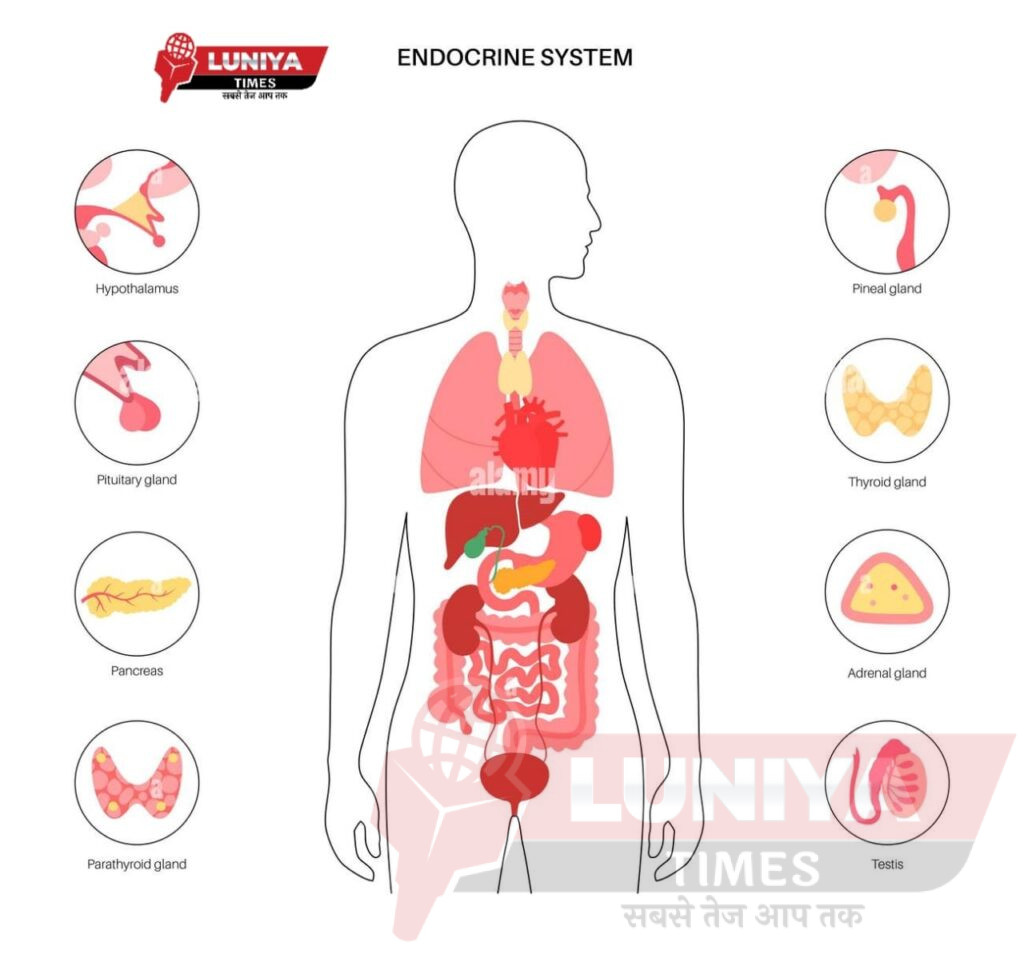
Reproductive System
Understanding the Intricacies of the Human Reproductive System
Introduction:
The human reproductive system is a marvel of biological engineering, responsible for the perpetuation of our species. Beyond its primary function of producing offspring, it plays a significant role in regulating hormones, maintaining sexual characteristics, and influencing overall health. In this article, we delve into the intricacies of the reproductive system, exploring its anatomy, functions, and the factors influencing its health.
Anatomy of the Reproductive System:
The human reproductive system is divided into two main categories: the male and female reproductive systems. Each system consists of internal and external organs specialized for reproduction.
Male Reproductive System:
At the core of the male reproductive system are the testes, responsible for producing sperm and testosterone. Sperm travel from the testes through a series of ducts, including the epididymis, vas deferens, ejaculatory ducts, and urethra, during ejaculation. Surrounding structures such as the prostate gland, seminal vesicles, and bulbourethral glands contribute fluids to semen, nourishing and aiding sperm on their journey.
Female Reproductive System:
The female reproductive system includes the ovaries, which produce eggs (ova) and hormones like estrogen and progesterone. Each month, an egg is released from one of the ovaries during ovulation, traveling through the fallopian tubes to the uterus. The uterus, or womb, is where a fertilized egg implants and develops into a fetus during pregnancy. If fertilization doesn’t occur, the uterine lining sheds during menstruation.
Functions of the Reproductive System:
1. Gamete Production: Both male and female reproductive systems produce specialized sex cells sperm in males and eggs in females that unite during fertilization to form a zygote.
2. Hormone Regulation: Hormones produced by the reproductive system, such as testosterone, estrogen, and progesterone, regulate secondary sexual characteristics, menstrual cycles, and fertility.
3. Fertilization and Pregnancy: The union of sperm and egg in the female reproductive tract leads to fertilization, followed by embryo implantation and development in the uterus, culminating in pregnancy and childbirth.
4. Sexual Differentiation: The reproductive system contributes to the development of primary and secondary sexual characteristics, distinguishing males and females.
Factors Affecting Reproductive Health:
Several factors can impact reproductive health, including:
1. Lifestyle Factors: Diet, exercise, stress, and substance use can influence reproductive function and fertility.
2. Environmental Factors: Exposure to pollutants, chemicals, and radiation may affect reproductive organs and fertility.
3. Genetic Factors: Inherited genetic conditions can impact reproductive health, affecting fertility or predisposing individuals to reproductive disorders.
4. Medical Conditions: Chronic illnesses, infections, hormonal imbalances, and anatomical abnormalities can affect reproductive system function.
5. Age: Reproductive capacity declines with age, with women experiencing a gradual decline in fertility and menopause, while men may experience a decline in sperm quality and fertility with age.
Conclusion:
The human reproductive system is a complex and vital aspect of human biology, essential for the continuation of life. Understanding its anatomy, functions, and the factors influencing its health is crucial for promoting reproductive well-being and addressing reproductive health issues. Through education, awareness, and access to healthcare, individuals can take proactive steps to maintain their reproductive health and fertility.
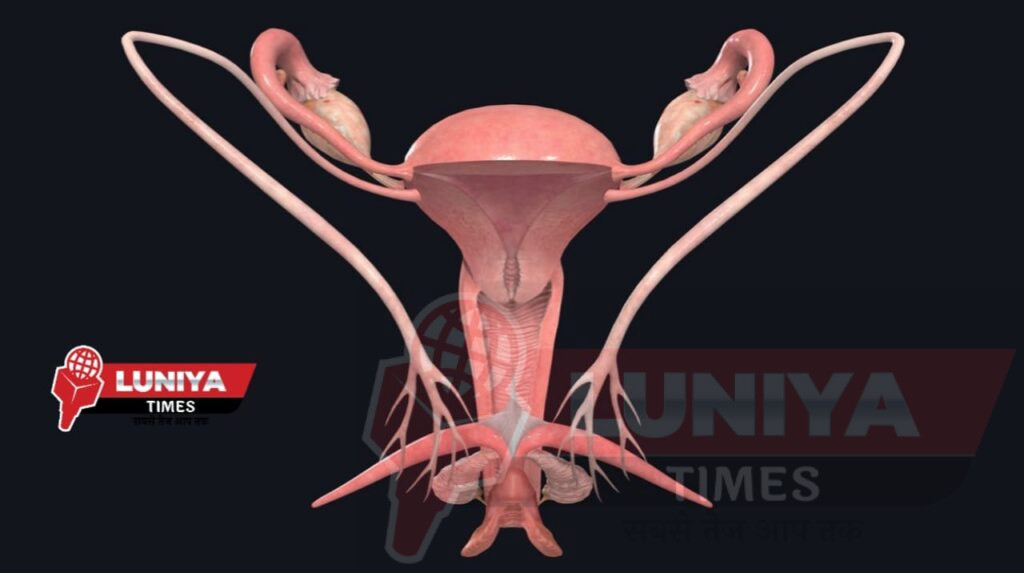
Integumentary System (Skin)
Understanding the Integumentary System: The Body’s Protective Shield
The integumentary system, encompassing the skin, hair, nails, and glands, serves as the body’s first line of defense against external threats and plays a vital role in various physiological functions. Often overlooked, this complex system is not merely a superficial covering but a dynamic organ essential for maintaining homeostasis and protecting against pathogens, regulating temperature, and facilitating sensory perception.
Structure and Composition:
At first glance, the skin may seem simple, but in the human body it is a highly organized structure made up of many layers. The epidermis, the outermost layer, acts as a barrier against environmental hazards and consists primarily of keratinocytes cells that produce the tough protein keratin. Beneath the epidermis is a dermis rich in blood vessels, nerve endings, and various glands. The hypodermis, or subcutaneous tissue, is composed primarily of fat cells and acts as insulation and shock absorber.
Functions:
Protection: One of the primary functions of the integumentary system is to protect the body from physical, chemical, and biological damage. The skin’s waterproof barrier prevents excessive fluid loss and shields against harmful UV radiation, toxins, and pathogens. Additionally, hair and nails offer further protection to sensitive areas and aid in tactile sensation.
Thermoregulation: The integumentary system helps regulate body temperature through processes like sweating and vasodilation. Sweat glands produce perspiration, which evaporates from the skin’s surface, cooling the body. Conversely, blood vessels in the skin constrict or dilate to conserve or release heat as needed.
Sensation: Sensory receptors in the skin allow us to perceive various stimuli, including touch, pressure, temperature, and pain. These receptors transmit information to the brain, enabling us to interact with the environment and respond to potential dangers or pleasurable sensations.
Excretion: Sweat glands play a role in excreting waste products, such as water, electrolytes, and small amounts of metabolic waste, aiding in maintaining internal balance.
Disorders and Conditions:
Many disorders and conditions in the human body can affect the integumentary system, ranging from minor irritations to serious diseases. Common examples include
Acne: Resulting from clogged hair follicles and excess oil production, acne is a prevalent skin condition, especially during adolescence.
Eczema: Characterized by inflammation, redness, and itchiness, eczema is a chronic condition that can be triggered by various factors, including genetics, allergies, and environmental irritants.
Skin Cancer: Exposure to UV radiation from sunlight or tanning beds can lead to the development of skin cancer, including melanoma, basal cell carcinoma, and squamous cell carcinoma.
Psoriasis: A chronic autoimmune disease, psoriasis causes the rapid growth of skin cells, resulting in thick, scaly patches on the skin’s surface.
Burns: Burns can damage the skin’s integrity and may vary in severity, from superficial to deep tissue damage requiring medical intervention.
Maintaining Skin Health:
Maintaining the health of the integumentary system involves adopting healthy lifestyle habits and practicing proper skincare. This includes:
- Protecting the skin from excessive sun exposure by wearing sunscreen, protective clothing, and seeking shade.
- Keeping the skin clean and moisturized to prevent dryness and irritation.
- Eating a balanced diet rich in vitamins, minerals, and antioxidants to support skin health.
- Avoiding smoking and excessive alcohol consumption, as they can impair skin function and accelerate aging.
Regular check-ups with a dermatologist are also essential for early detection and treatment of any skin abnormalities or disorders.
Conclusion:
The human integumentary system is a remarkable and multifunctional organ system that plays a vital role in protecting the body, regulating temperature, facilitating sensory perception, and maintaining overall health. Understanding its structure, functions, and common disorders is key to adopting practices that promote skin health and well-being. By taking care of our skin, we not only enhance our physical appearance but also protect our body’s most important shield against the outside world.
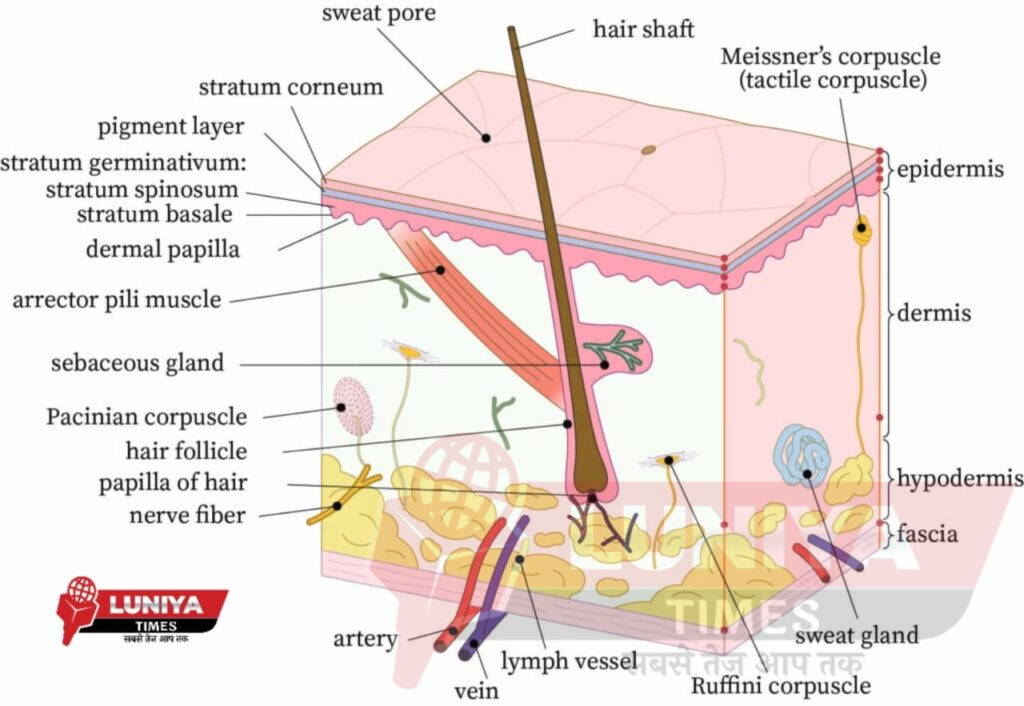
Join WhatsApp Group
Read Also 1 Best article of “Who Was Bharat Ratna Pranab Kumar Mukherjee” Biography











I’ll right away snatch your rss feed as I can’t find your e-mail subscription hyperlink or newsletter service.
Do you have any? Kindly allow me understand in order that
I could subscribe. Thanks.